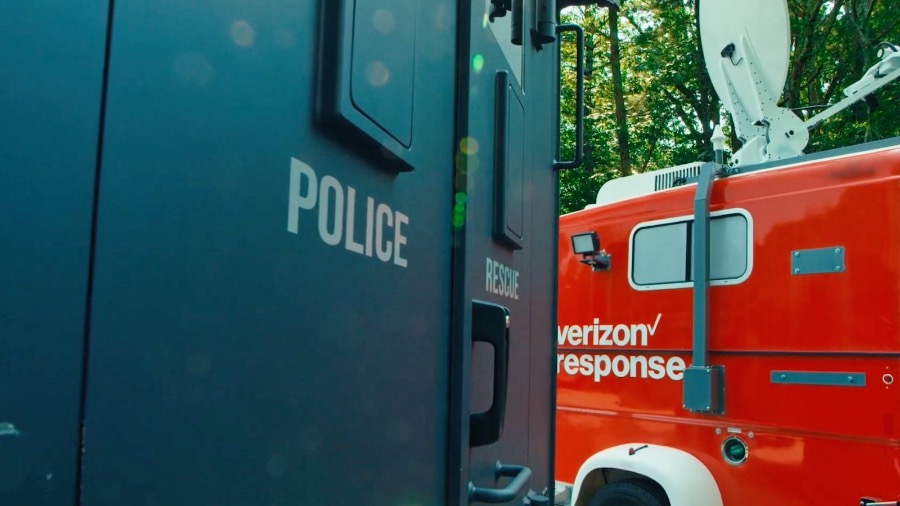
Verizon Frontline this week revealed the findings of a survey of nearly 2,000 public safety professionals, including first responders from fire and police departments, emergency medical services and emergency management agencies as well as representatives from public safety answering points (PSAPs) and emergency call centers (ECCs).
Now in its third year, the Verizon Frontline Public Safety Communications Survey, commissioned by Verizon Frontline and conducted by Lexipol, asked respondents about their current and future technology use, emergency preparedness, and outlook on how 5G and advances in communications technology may impact their work in the field.
The findings underscore the value first responders place on network reliability, the evolution of mobility, and the increasing impact of 5G.
Reliability still reigns
Network reliability remains the chief priority for first responders. More than half of survey respondents (51%) cited a reliable and resilient network as the most important factor in their day-to-day professional communications.
Additionally, almost half of all first responders (48%) said reliability and speed were the most important factors when choosing a public safety communications provider.
“The results of our third annual public safety communications survey once again underscore how important network reliability is to first responders,” said Maggie Hallbach, Senior Vice President, Verizon Public Sector and President, Verizon Frontline. “This is why it’s not surprising that more than 35,000 public safety agencies trust Verizon Frontline to deliver their mission-critical communications capabilities.”
Reliability as a priority is even more pronounced within the areas emergency preparedness and response. Almost three-quarters of respondents (72%) stated that a reliable and resilient network was among the three most crucial communications considerations during emergencies.
Mobility is evolving
The devices most used on a daily basis by first responders in the field are smartphones (88%), land mobile radios (80%) and laptops (71%), though the survey revealed that fewer respondents expect to use these devices on a daily basis in five years, with only 84% saying they’d use smartphones daily, 69% saying they’d use land mobile radios daily, and 67% saying they’d use laptops daily.
By comparison, the devices less likely to be used on a daily basis by first responders today are more likely to be used on a daily basis in five years. Less than half of respondents (49%) said they used tablets on a daily basis today, but almost two-thirds of them (65%) believed they would use tablets on a daily basis in five years. Forty-three percent use internet-connected vehicles on a daily basis, but 62% believed they would use them daily in five years. Other technologies more likely to be used daily in five years are wearables, drones/robots and Augmented and Virtual Reality (AR/VR).
5G is a must-have
As the prevalence of 5G continues to grow, so does awareness of 5G capabilities among first responders. In this year’s survey, more than three-quarters of respondents (77%) considered 5G to be either an important or a top priority for the future of public safety. Overall, the number of first responders who viewed 5G as a top priority increased by five percentage points (from 18% last year to 23% this year). More and more, first responders see technology enabled by 5G connectivity as critical to public safety.
“With more than half of all respondents identifying speed or reliability as the primary benefits of 5G and nearly 80-percent identifying 5G as either a top or important priority for their agency in the near future, there is no doubt first responders are ready to embrace the capabilities and applications enabled by Verizon 5G Ultra Wideband,” said Massimo Peselli, Verizon’s Chief Revenue Officer for Global Enterprise and Public Sector.
“From internet-connected vehicles to enhanced situational awareness through real-time sharing of video and images from the front lines…and so much more…Verizon Frontline and 5G are poised to help transform the future of public safety.”
Other findings and standout statistics from the survey include the following:
Stronger connections wanted: 65% of first responders said they would like a stronger connection in the field, up from 60% last year. This desire for a stronger connection lines up with one of the main concerns of 67% of respondents – having an unreliable network.
Smartphones losing dominance: Smartphones are the devices most used by first responders today, with 88% of respondents saying they use smartphones on a daily basis, but that number is declining. Last year, 92% of respondents said they used smartphones daily. Also, only 84% of this year’s respondents said they anticipate using smartphones daily in five years.
43% of first responders feel unprepared for cyberattacks
43% of first responders expect to use robots on a daily basis in five years (compared to 13% now)
